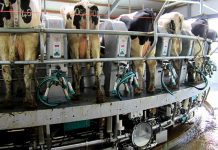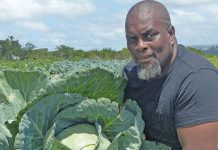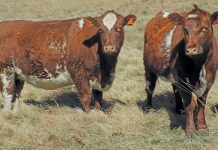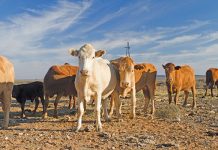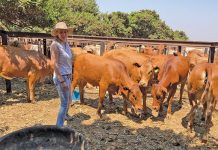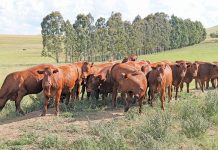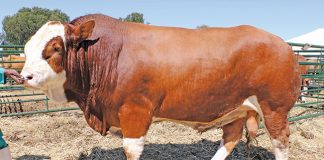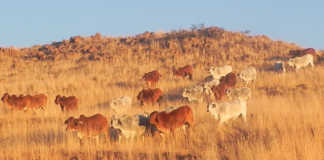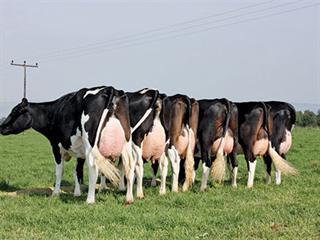
The successful introduction of parasitic wasps as part of an integrated pest management (IPM) programme has reduced the overall pesticide bill of a KwaZulu-Natal dairy producer by an estimated 65%. Rodney Beater, partner at Ferndale dairy and timber farm (980ha) near Vryheid in KZN, says that introducing the parasitic wasp control programme was one of the best investments he has made.
“Before we started this programme six years ago, cows would kick off clusters at milking because of the irritation caused by flies. We couldn’t open windows or braai outside without being invaded by flies. The introduction of the parasitic wasp has revolutionised fly control. The past summer was extremely hot and humid, with some of the most hostile milking conditions I’ve encountered in 33 years. Yet we maintained a reduction in the number of flies, using less pesticides than before,” says Beater.
Controlling biting and common house flies on a dairy farm is of utmost importance. Not only are flies excellent vectors of disease, but their constant biting and buzzing takes a toll on dairy cows. “The irritation and stress caused by flies lowers milk production and increases mastitis outbreaks,” says Dr Vincent Turner, former Onderstepoort professor and consultant in udder health and preventive medicine. “Mastitis in turn increases somatic cell counts (SCC), which leads to financial penalties for the farmer.”
He estimates that milk production can drop by about 6% in a cow whose milk has an SCC of 300 000 cells/ml, while a cow with an SCC of 900 000 cells/ml may experience a 19% reduction in milk production. The domestic or house fly (Musca domestica) and the biting stable fly (Stomoxys calcitrans) are the flies most commonly associated with dairy farms. The house fly can transmit bacteria such as Staphyloccocus aureus, E. Coli and Streptococcus uberis, while the stable fly can cause pronounced irritation and stress and may transmit diseases such as anaplasmosis and Rift Valley fever.
Flies are prolific breeders. An adult can lay as many as 2 400 eggs, during her two- to three-week lifetime, which hatch within seven to ten days. Dairy farms, with their zero-grazing systems, have ideal breeding and egg-laying areas – there is plenty of moist organic matter in calf-rearing and feeding areas, decaying vegetation, compost and manure heaps, under water troughs and in areas where effluent is disposed of indiscriminately.

Rodney Beater. Photo courtesy of DEHTEQ
Scattering the pupae of insectary-reared predatorial wasps in areas like these has proved highly effective for Beater. “My staff know where the breeding hotspots are,” he explains. “They place the wasp pupae in these areas so that when they hatch, their food source is close by.” The wasps eat fly larval tissue as they develop into adulthood, then mate to form a new generation. Each female then deposits a parasite egg into the fly pupa. Their life cycle lasts from 16 to 28 days.
The insects are supplied in pouches produced by US firm Kunafin and distributed locally by veterinary diagnostics company DEHTEQ. Less than 1mm in size, they are soil insects and rarely fly above the ground. “We put wasps out every 10 days in the peak season to keep on top of the problem,” says Beater. “At one stage we were putting down 300 pouches at a time – each with at least 20 000 parasitised fly pupae – but now that we have good fly control, we’ve reduced it to 150 pouches. Every year we put down fewer pouches but we’ll never get to the stage where we don’t use them at all.”
Stick to the programme
DEHTEQ managing director Brad Roe explains that the wasps can take between one and six summer months to make a visible impact on adult fly numbers. The speed and degree of success of the programme depends on the correct quantity and frequency of fly parasite releases. It’s also important to use an appropriate chemical programme properly, to time the programme to coincide with early spring fly emergence, and to maintain the quality of manure management and handling facilities. Diligence is no less crucial.
“Once the fly population is reduced in a dairy, it’s essential to stay with the IPM programme,” stresses Roe. “The parasite breeding cycle is two to four times slower than the fly breeding cycle, so continuity must be maintained in parasite releases. When parasites are not released often enough or in sufficient numbers, you can expect a rapid return to fly heaven.”
While the time to embark on an IPM programme varies according to location, the general rule is the sooner, the better.
“In colder climates, parasite releases can begin as soon as the first over-wintered flies begin to appear,” explains Roe. “This means shortly after mid-winter in the highveld regions of South Africa. In fact, producers already using fly parasites will maintain a reduced level of releases throughout winter.
“In warmer lowveld regions, in environmentally controlled poultry and livestock houses and in most of eastern and southern KwaZulu-Natal, releases will be maintained throughout winter at normal summer release levels.” When an integrated biological programme is combined with better animal husbandry practices, the benefits become significant.
“It’s difficult to attribute this improvement to fly control alone,” says Beater. “We actively work to avoid the onset of environmental mastitis. Our cows receive part TMR rations and graze on 300ha of pasture and veld.
As soon as the camps get muddy, especially in the hot summer months, the cases of environmental mastitis increase. So we rotate camps fairly quickly and move the animals before mastitis starts.” He estimates that he uses 70% to 80% less pesticide than he did before. “When we started fogging for fly control, [done after milking] eight years ago, we’d sometimes fog for 80 to 90 days and use up to 50l of Deletex,” he recalls.
“This year, we bought 15l of Deletex and fogged for only 10 to 14 days. I still have 11l left. “So it’s saved us money and time. We don’t have the hassle of managing the fogger and the flow of cattle through the fogger.” While the wasps add a cost onto the pest control bill, Beater is pleased with the results. “We’ve seen a definite decline in the fly population, but equally important, we’ve reduced pesticide applications, so we shouldn’t have problems with flies developing pesticide resistance.”
Less pesticide use means healthier cows. US research has shown that pyrethroids can have a negative effect on cow fertility. In addition, the Ferndale animals, particularly the calves, appear to be having fewer eye problems than before. One of the clearest signs of the IPM programme’s success is the fact that the Ferndale herd of 690 Holsteins and Swedish Reds, which produces on average six million litres of milk a year, has shown a steady drop in incidents of mastitis and bulk tank SCCs.
Continuity
Ferndale has been owned by the Beater family for more than 90 years but the family is in the process of selling the farm.
“Our younger generation is not interesting in coming back to the farm so we are planning our exit,” explains Rodney. “We would encourage the new owners, though, to continue with the programme. It certainly is a fantastic concept. I’d never envisage dairy farming now without biological fly control.”
An holistic approach
The release of wasps should occur as part of an holistic IPM programme, which combines the responsible application of pesticides with good animal husbandry. The dairy operation should be kept as clean and dry as possible to eliminate potential fly-breeding areas. Ensure good drainage, remove manure and organic matter such as bedding from around the parlour and calf-rearing areas, increase fly baiting during rainy periods, and collect parlour effluent in adequately designed and managed slurry dams.
With fly larvae and pupae taken care of by the wasps, adult fly populations can be controlled with the strategic use of fly traps, baits and surface sprays. “Position pheromone traps no higher than 1m off the ground around the perimeter of animal holding areas such as calf pens and cow camps. The traps must be correctly managed and maintained,” advises Dr Vincent Turner, consultant in udder health and preventive medicine.
Chemical baits and sprays for adult fly knock-down should be rotated using different active ingredients every nine to 12 months to minimise the development of resistance. “Granular baits should be sprinkled lightly in strategic areas. Residual surface sprays must be applied monthly on walls, roof eaves and trees where flies roost in the early morning or in the shade in the heat of the day,” says Turner.
Contact Dr Vincent Turner on 083 268 5711 or [email protected]; Paul Roe on 071 2456030 or [email protected]; Rodney Beater at [email protected].

